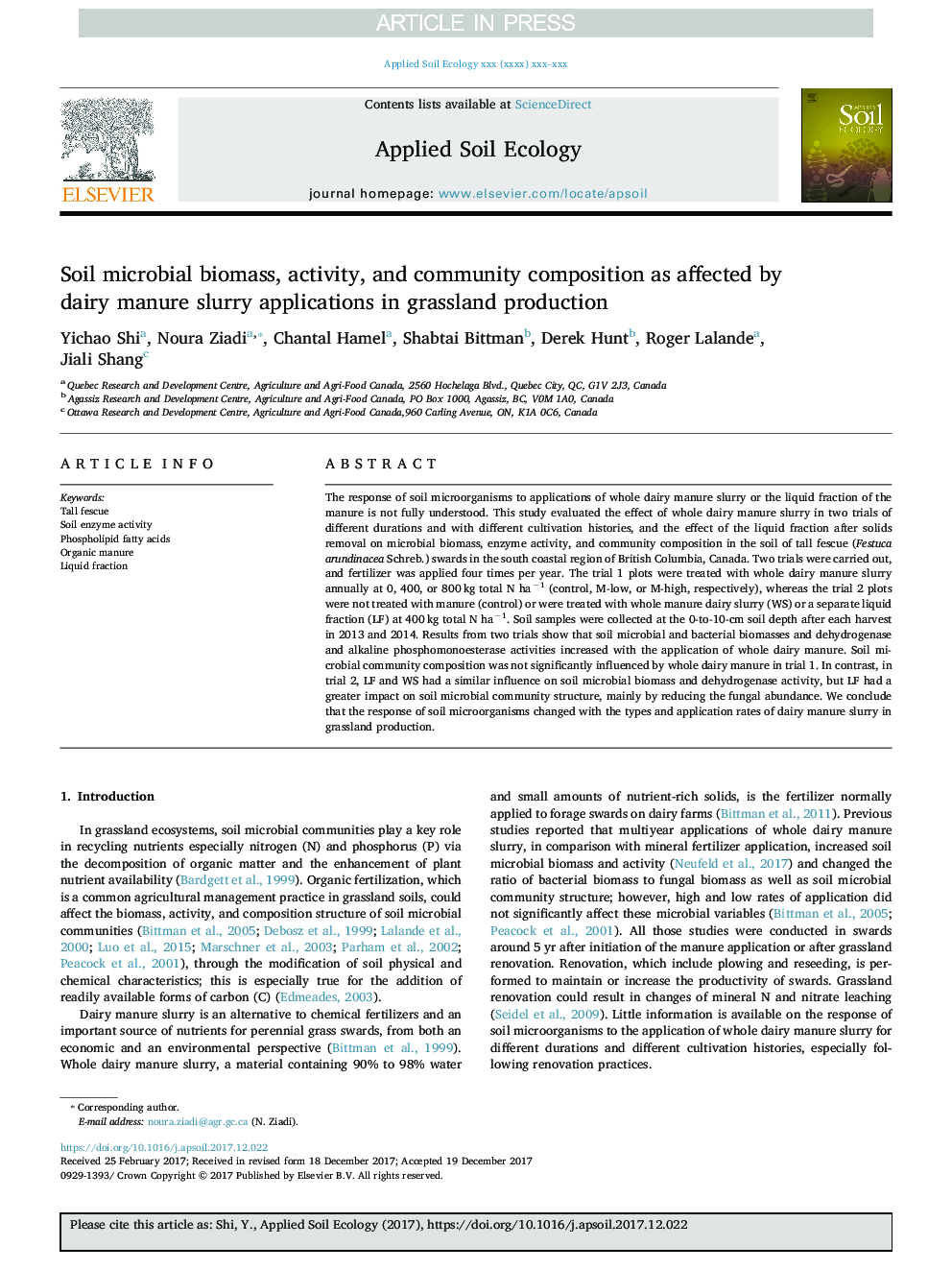| Article ID | Journal | Published Year | Pages | File Type |
|---|---|---|---|---|
| 8846703 | Applied Soil Ecology | 2018 | 11 Pages |
Abstract
The response of soil microorganisms to applications of whole dairy manure slurry or the liquid fraction of the manure is not fully understood. This study evaluated the effect of whole dairy manure slurry in two trials of different durations and with different cultivation histories, and the effect of the liquid fraction after solids removal on microbial biomass, enzyme activity, and community composition in the soil of tall fescue (Festuca arundinacea Schreb.) swards in the south coastal region of British Columbia, Canada. Two trials were carried out, and fertilizer was applied four times per year. The trial 1 plots were treated with whole dairy manure slurry annually at 0, 400, or 800â¯kg total N haâ1 (control, Mâlow, or Mâhigh, respectively), whereas the trial 2 plots were not treated with manure (control) or were treated with whole manure dairy slurry (WS) or a separate liquid fraction (LF) at 400â¯kg total N haâ1. Soil samples were collected at the 0âtoâ10âcm soil depth after each harvest in 2013 and 2014. Results from two trials show that soil microbial and bacterial biomasses and dehydrogenase and alkaline phosphomonoesterase activities increased with the application of whole dairy manure. Soil microbial community composition was not significantly influenced by whole dairy manure in trial 1. In contrast, in trial 2, LF and WS had a similar influence on soil microbial biomass and dehydrogenase activity, but LF had a greater impact on soil microbial community structure, mainly by reducing the fungal abundance. We conclude that the response of soil microorganisms changed with the types and application rates of dairy manure slurry in grassland production.
Related Topics
Life Sciences
Agricultural and Biological Sciences
Ecology, Evolution, Behavior and Systematics
Authors
Yichao Shi, Noura Ziadi, Chantal Hamel, Shabtai Bittman, Derek Hunt, Roger Lalande, Jiali Shang,
